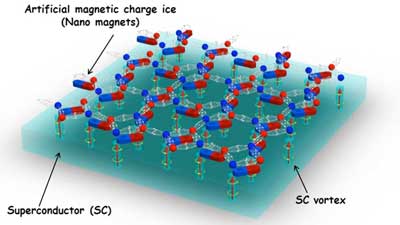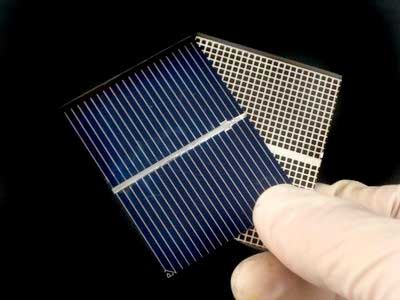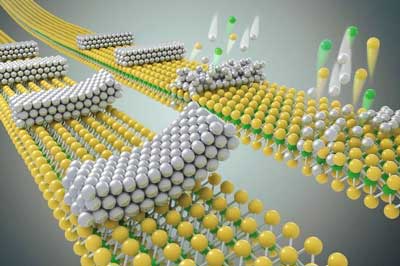
Monday, June 11, 2018
Designing a better superconductor with geometric frustration
Study shows a magnet-controlled 'switch' in superconductor configuration provides unprecedented flexibility in managing the location of vortex filaments, altering the properties of the superconductor.
New graphene bolometer is faster, simpler, and covers more wavelengths
A better device for measuring electromagnetic radiation.

MOF material offers selective, reversible and repeatable capture of toxic atmospheric gas
An international team of scientists has developed a metal-organic framework material (MOF) that exhibits a selective, fully reversible and repeatable capability to remove nitrogen dioxide gas from the atmosphere in ambient conditions.

Quantum LEGO: building ultracold molecules
If a coupling mechanism between the atom pair and the molecule exists, one can create a situation in which atom pairs ?resonate? with molecules, thereby clicking together and forming the desired end product.

Solar cells combining silicon with perovskite have achieved record efficiency of 25.2 percent
Researchers have combined silicon- and perovskite-based solar cells. The resulting efficiency of 25.2 percent is a record for this type of tandem cell. Their innovative yet simple manufacturing technique could be directly integrated into existing production lines, and efficiency could eventually rise above 30 percent.

A graphene nanocomposite turbocharge for lithium batteries
A team of material researchers has succeeded in producing a composite material that is particularly suited for electrodes in lithium batteries. The nanocomposite material might help to significantly increase the storage capacity and lifetime of batteries as well as their charging speed.

Perovskite solar cell technology for exceptional light harvesting under indoor illumination
The exceptional performance under indoor lighting was achieved by incorporating new solution-processed SnO2/MgO composite electron transport layers between the perovskite semiconductor film and the bottom transparent electrode.

Tiny defects in semiconductors create 'speed bumps' for electrons
New technique could improve electronics? energy efficiency by removing the microscopic flaws usually formed during manufacturing.

Ice on the spin liquid
Scientists report on the coexistence of liquid and frozen states of electron spins in a magnetic compound under pressure.

Non-crystal clarity: Scientists find ordered magnetic patterns in disordered magnetic material
Study relies on high-resolution microscopy techniques to confirm nanoscale magnetic features.

Physicists create new class of 2D artificial materials
International team verifies 53-year-old theory on ferroelectric metals; findings could spawn a new generation of multi-functional devices and applications.

Subscribe to:
Posts (Atom)
